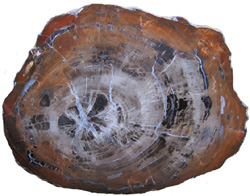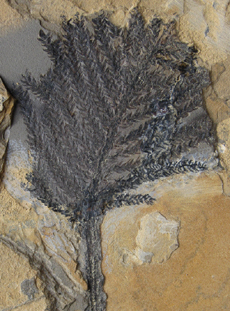
 |
 |
Science
Olympiad
| Division (Phylum) Pinophyta or Coniferae | |
| Gymnosperms
("naked-seeds") include plants that usually bear
their seeds in cone-like structures as opposed to the angiosperms
(flowering plants) that have seeds enclosed in an ovary.
Modern gymnosperms include the following extant divisions:
Pinophyta, Ginkgophyta, Cycadophyta, and Gnetopyta. Pteridosperms
or seed ferns represent early forms of gymnosperms. Ginkgophyta,
Cycadophyta and Pteridospermatophyta are explored in separate
articles. Pinophytes, more commonly known as conifers, range from the Carboniferous to recent times. Cordaitales and Voltziales are well-known extinct orders of Pinophyta (formerly Coniferophyta). The order Pinales (formerly Coniferales) has both extinct and extant genera. Pinales includes such familiar plants as pine, spruce, douglas-firs, firs, cypresses, cedars, junipers, larches, sequoias, and yews (yews use to be in a separate order Taxales). Progymnosperms Progymnosperms (Division Progymnospermophyta) range from the Devonian to the Carboniferous and are thought to represent the plant group from which all seed plants evolved. Progymnosperms were trees, which reached heights of 8 meters and diameters up to 1.5 meters (Willis & McElwain, 2005, p. 110). In 1960 the American Paleobotanist Charles Beck published a paper describing the connection between the foliage known as Archaeopteris and the wood Callixylon. Archaeopteris was believed to be a fern, while Callixylon was thought to represent a gymnosperm. The work of Beck demonstrated that the foliage and wood belonged to the same plant. Archaeopteris is a true missing link between fern-like plants and conifer-like plants. The trunk (Callixylon) of this tree was constructed of conifer-like wood, while the branches were adorned with fern-like fronds (Archaeopteris). The underside of the fronds had sac-like sori that contained spores for reproduction. It is easy to understand why the fern-like fronds and conifer-like wood of this tree were considered to be separate organisms until the fossils connecting the foliage and wood were discovered. Beck’s observations led to the discovery of an extinct group of plants intermediate between ferns and conifers, which are now grouped together as the progymnosperms (Kenrick & Davis, 2002, p. 41). Progymnosperms are well represented in the fossil record with three orders recognized (Aneurophytales, Archaeopteridales, and Protopityales) Willis & McElwain, 2005, p. 110). Archaeopteris could be referred to as the first modern tree as it made up a significant portion of the canopy of early Devonian forests (Murphy, 2006, Archaeopteris page). Seeds & Dry Climates Gymnosperms produce very small gametophytes within male and female cones. The male gametophyte is the pollen and the female gametophyte are the eggs in the ovule. The sperm of gymnosperms do not swim through water to reach the ovules (Ginkgo biloba and cycads are the exception, see Taylor, Taylor, and Krings, 2009, p. 744). Wind carried pollen transports the sperm. When pollen lands near an ovule a pollen tube grows towards the ovule. Sperm travel down the pollen tube to the eggs in the ovule. After fertilization, the female cone closes up to seal the developing seeds. Seeds encase the developing plant embryo, providing them with nutrients and protection from the surrounding environment. Seeds allow embryos to remain dormant during unfavorable conditions. Pollen frees gymnosperms from the need to have water for fertilization. Seeds allow gymnosperms to delay germination until favorable conditions exist. These reproductive strategies gave gymnosperms a distinct advantage over the spore producing plants in dry environments. Cordaitales Cordaites (order Cordaitales) are conifer like plants that range from the Pennsylvanian to the Permian. Cordaites grew as shrubs and trees. Cordaite trees possessed a slender trunk adorned with a branching crown of leaves. Cordaite stems were eusteles that possessed a rather large pith. As the tree grew the pith broke down to create a hollow area. Artisia is the pith cast of Cordaites. The stem was composed of secondary wood surrounded by bark. Cordaites had long leathery straplike leaves with many parallel veins The leaves were spirally arranged around the stem. Cordaites had loosely compacted cones with heart-shaped pendulous seeds. Cones are given the name Cordaianthus and individual seeds are known as Cordiacarpus (Tidwell, 1998, pp. 103-104). Cordaites populated mangrove-like and dry upland habitats. Cordaite trees were among the tallest in the late Carboniferous and Permian forests (Willis & McElwain, 2002, p. 114). Voltziales Voltziales (order Voltziales), commonly known as walchias, range from the Carboniferous to the Triassic. The habit and wood structure of Voltziales was different from that of Cordaites. Voltziales were large trees that possessed needle-like leaves. Pollen and seeds were organized in cones at the end of leafy branches. Voltziales are traditionally viewed as an evolutionary transition between Cordaites and modern families of Conifers (order Pinales) (Bhatnagar & Moitra, 1996, p. 167; Taylor, Taylor, & Krings, 2009, p. 828). The reproductive structures of Voltziales are intermediate between Cordaitales and Coniferales. In overall appearance, however, they were much like the Araucaria of the Coniferales (Kenrick & Davis, 2004, p. 95). Some of the earliest conifers belong to the Voltziales family Utrechtiaceae (formerly known as Lebachiaceae and Walchiaceae). Utrechia is a well-known Permian aged member of this family. Ultrechia was a 5-meter tree or shrub. Like most conifers it had a eustele stem, needle-like leaves arranged spirally, and branches in whorls. Male cones were very much like extant conifers; however, female cones possessed a structure between that of cordaites and modern conifers. Pinales Pinales originated from members of Voltziales, which in turn have their origins within the Cordaitales (Willis & McElwain, 2002, p. 150). The fossil record of modern Pinales families dates back to the Triassic (Taylor, Taylor, & Krings, 2009, p. 870). Pinales can be found in just about any environment in the world. In some biomes, such as the Taiga, conifers are the dominant plant. Roughly 700 extant species represent Pinales. Modern
day conifers grow as shrubs or trees. Arborescent conifers
exhibit a pyramidal growth form. Leaves are usually needle-like,
but can also show a broad flat shape. Conifers bear seeds
in woody cones, except for Junipers, which have a berry-like
structure.
Most conifers are monoecious, but bear male and female
reproductive structures in different cones on different parts
of the tree.
Conifers have eustele stems arranged in whorls. Conifer
stems are woody cylinders made of interconnected tubes of
xylem
for water conduction impregnated with lignin. This type
of stem
is resistant to buckling and can support profuse branching
and large crowns (Kenrick & Davis, 2004, p. 70). Conifers
possess a branching tap root system. The diversification of Conifers during the Mesozoic helps to mark a significant change in the world's flora. Paleozoic flora was dominated by ferns and clubmosses (Paleophytic flora). The Paleophytic flora gave way to a Mesophytic flora during the Triassic period. Woody seed-bearing plants and their relatives dominated Mesophytic flora. Thus, the change from Paleophytic to Mesophytic represented a change in reproductive strategy; from spore producers to seed producers. Conifers, cycads, and ginkgos diversified during this time and dominated the landscape (Kenrick & Davis, 2004, p. 143). Araucarioxylon arizonicum is a conifer found in the Triassic Chinle Formation and is the state fossil for Arizona. Metasequoia leaves from Eocene deposits are the state fossil for Oregon. Teredo petrified wood contains the borings of the Teredo bivalve mollusc. The borings are known as Teredolites ichnofacies. Teredo wood is the state fossil for North Dakota. Teredo petrified wood specimens represent both conifers and angiosperms. Petrified wood in general is the state gem for Washington. Many types of conifers and angiosperms are represented by Miocene-aged fossil wood from Washington.Science Olympiad Fossil Event The
2016 Science Olympiad Fossil List inludes the
genus Metasequoia within the phylum Pinophyta. Petrified wood listed under "Other" could
also fit within this category. |
|
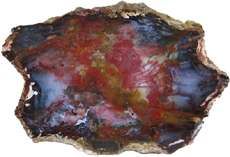 Picea sp. Jarbridge Ryolite Formation Miocene Hubbard Basin, Nevada 26 cm x 19 cm |
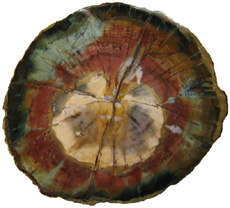 Primitive Conifer Woodworthia sp. Gokwe, Zimbabwe Triassic 12.5 cm x 11.5 cm |
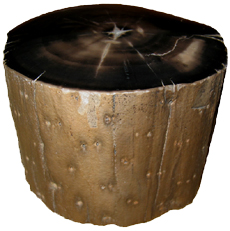 Woodworthia sp. Chinle Formation Triassic Blanding, Utah 9 cm diameter x 6 cm tall |
 Araucarioxylon sp. Chinle Formation Triassic Winslow, Arizona 12 cm diameter x 13 cm tall |
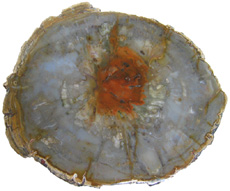 Araucarioxylon sp. Triassic Madagascar 12.5 cm x 9.5 cm |
|
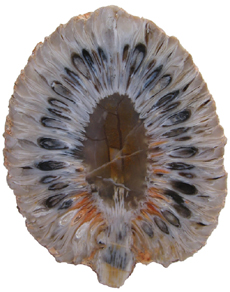 Araucaria mirabilis Jurassic Santa Cruz, Argentina 6.5cm wide x 8.5cm long |
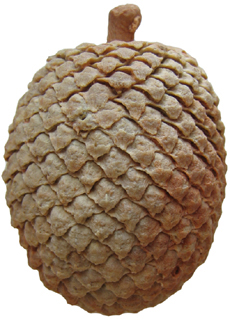 Araucaria mirabilis Jurassic Santa Cruz, Argentina 6.5cm wide x 8.5cm long |
 Pararaucaria patagonica Jurassic Santa Cruz, Argentina 3.5 cm x 1.5 cm |
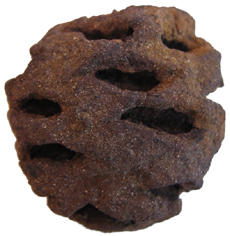 Metasequoia cone cast (Sequoia dakotensis Brown) Hell Creek Formation Late Cretaceous Morton County, North Dakota 3 cm x 3 cm |
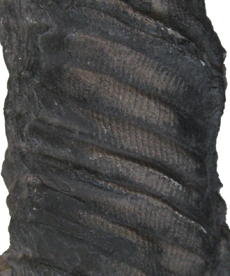 Cordaite Pith Cast Artisia Upper Carboniferous Kladno, Czech Republic 3.5 cm wide |
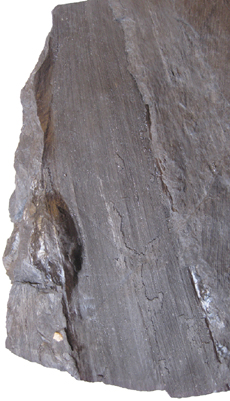 Cordaite Leaf Upper Carboniferous Kladno, Czech Republic 14.5 cm long by 4.5 cm wide Note: Seed from Seed Fern Trigonocarpus sp. beside the leaf |
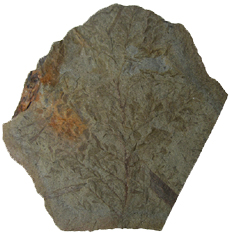 Archaeopteris halliana Devonian Youngsville, New York Plate is 18 cm long x 14.5 cm wide |
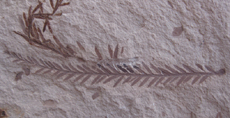 Metasequoia occidentalis Muddy Creek Formation Oligocene Beaverhead County, Montana |
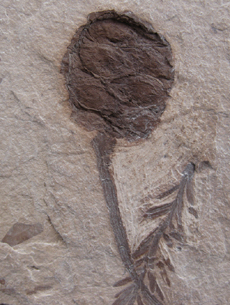 Metasequoia glyptostroboides Muddy Creek Formation Oligocene Beaverhead County, Montana cone and stem 5 cm long |
|
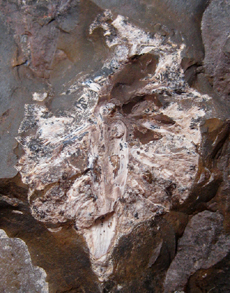 Bald Cypress Cone Parataxodium sp. Sentinel Butte Formation Paleocene Almont, North Dakota 3 cm tall x 2 cm wide |
|
Bibliography |
|
| Bhatnagar
S.P. & Moitra, A. (1996). Gymnosperms. India:
New Age Publishers.
Brown, R. (1935). Some Fossil Conifers from Maryland and North Dakota. Journal of the Washington Academy of Science, vol 25(10): 441-450. Kenrick, P. and Davis, P. (2004). Fossil Plants. Smithsonian Books: Washington. Taylor,
T.N., Taylor E.L. & Krings, M. (2009). Paleobotany:
The Biology and Evolution of Fossil Plants [2nd Ed].
New York: Academic Press. |
|











